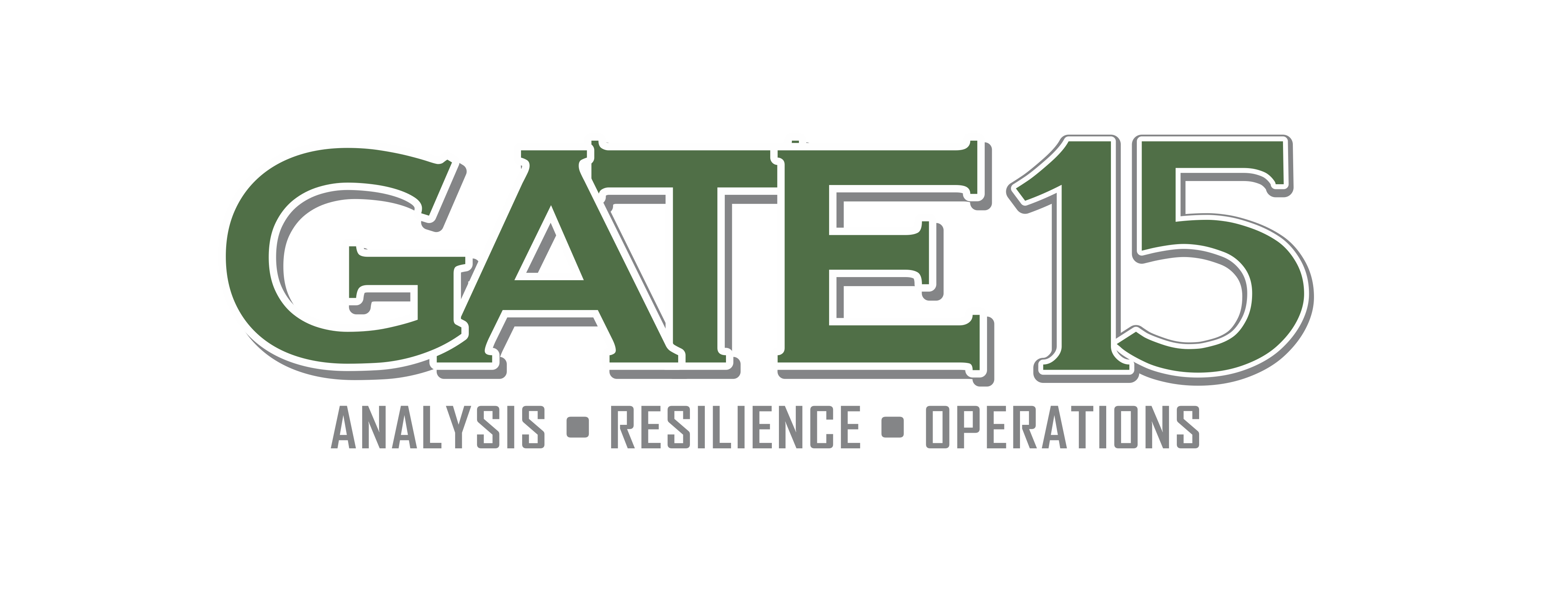By Bridget Johnson
Every so often, terror groups like to remind followers that poison could be a cheap and effective way to wage an attack and spread panic in buffet lines across the country. They tailor the option toward those who may not have the training to launch a complex gun attack, those who may not have the brains or resources to build a successful incendiary device, and those who may naturally have access to what people ingest through jobs in food service, food manufacturing or hospitality. “Each wolf chooses what suits him and what fits his goal and location of the implementation of the action,” ISIS said in a 2015 call to action.
“Each wolf chooses what suits him and what fits his goal and location of the implementation of the action…”
U.S. officials said in 2010 that al-Qaeda in the Arabian Peninsula (AQAP) members had been discussing spiking American salad bars and hotel buffets with ricin and cyanide. In a 2012 issue of AQAP’s Inspire magazine published several months after his death, American recruiter  Anwar al-Awlaki said that “the use of poisons of chemical and biological weapons against population centers is allowed and strongly recommended due to the effect on the enemy.”
Anwar al-Awlaki said that “the use of poisons of chemical and biological weapons against population centers is allowed and strongly recommended due to the effect on the enemy.”
In September 2016, an ISIS guide suggested that jihadists go gardening to find poison for attacks, and discussed extraction methods for castor seeds (ricin) and the strychnine tree, as well as other poisonous plants that are “accessible to everyone” and “extremely toxic… used sometimes in the commission of crimes.” This past September, ISIS supporters called for adding poison to foods for sale at Western grocery stores.
Lots of threats, lots of nudges among leadership and supporters, but a plunge that Islamist terrorists haven’t yet taken. The early 1980s saw the mysterious cyanide tampering of on-the-shelf Tylenol, followed by copycats spiking medicines with poisons and poking needles into  Halloween candy. In 1984, the Rajneeshee cult contaminated salad bars, table-top condiments, deli salads and more with salmonella around The Dalles, Ore.; 751 people were sickened. As recently as this year, a 53-year-old German man confessed to poisoning baby food and threatening to contaminate other products across Europe.
Halloween candy. In 1984, the Rajneeshee cult contaminated salad bars, table-top condiments, deli salads and more with salmonella around The Dalles, Ore.; 751 people were sickened. As recently as this year, a 53-year-old German man confessed to poisoning baby food and threatening to contaminate other products across Europe.
The Centers for Disease Control and Prevention noted in a 2000 report that unintentional contamination of chickens with dioxin-laced feed in Belgium the previous year underscored the vulnerability of the food chain and showed “how a covert act of foodborne biological or chemical terrorism could affect commerce and human or animal health.”
“Without special preparation at the local and state levels, a large-scale attack with variola virus, aerosolized anthrax spores, a nerve gas, or a foodborne biological or chemical agent could overwhelm the local and perhaps national public health infrastructure,” the report added. “Large numbers of patients, including both infected persons and the ‘worried well,’ would seek medical attention, with a corresponding need for medical supplies, diagnostic tests, and hospital beds. Emergency responders, health-care workers, and public health officials could be at special risk, and everyday life would be disrupted as a result of widespread fear of contagion.”
“a covert act of foodborne biological or chemical terrorism could affect commerce and human or animal health… a large-scale attack with variola virus, aerosolized anthrax spores, a nerve gas, or a foodborne biological or chemical agent could overwhelm the local and perhaps national public health infrastructure…”
Fast-forward to this May, when the Department of Homeland Security issued an alert in a bulletin to first responders: “While we have not seen any specific, credible terrorist threats against Homeland food production and distribution infrastructure, we cannot rule out the possibility of inspired violent extremists or disgruntled insiders attempting to adulterate or poison food and beverages.”
The FBI warned at last year’s Food Safety Consortium that an alert workplace needs to be the first line of defense against insider threats who may use their position in food processing, distribution, storage or service to contaminate products. Such an insider threat might show outward signs associated with other types of escalation to workplace violence, including financial or personal problems, clashes with fellow employees or expressing sympathies with extremist ideology. Precautions taken by food facilities can include restricting access to sensitive areas, executing and enforcing clear security policies, and screening employees for what they bring to work and leave with at the end of the shift.

Suspicious behaviors within the industry should be noted and reported to authorities, including people casing out self-service food areas, strange deliveries, or someone trying to attain information about security operations and peak hours. Employees should be trained to spot and report products that appear to have been subjected to tampering, such as resealed packaging, and to exercise safety protocols with open food or ingredient containers.
The New York State Department of Health adds that retailers and food service should know and trust their vendors, check IDs of new delivery people, watch for counterfeit food packaging, conduct background checks on employees, only accept deliveries when staff are present, put self-service food stations within constant view of employees and make sure new food items added to the salad bar aren’t mixed in with old ones.
The Food and Drug Administration, which last year issued its final rule for Mitigation Strategies to Protect Food Against Intentional Adulteration, offers tools to help organizations build their food defense plan, prepare for various scenarios, and train employees to recognize and report risks from farm to table. With threat education and workplace alertness, the worst tragedy to befall the buffet this holiday season could just be that person who hogs all the steak…

Maintain security and threat awareness via Gate 15’s free daily paper, the Gate 15 SUN and learn more about Hostile Events Preparedness and our HEPS Program here. Gate 15 provides intelligence and threat information to inform routine situational awareness, preparedness planning, and to penetrate the decision-making cycle to help inform time-sensitive decisions effecting operations, security, and resources. We provide clients with routine cyber and physical security products tailored to the individual client’s interests. Such products include relevant analysis, assessments, and mitigation strategies on a variety of topics.
provides intelligence and threat information to inform routine situational awareness, preparedness planning, and to penetrate the decision-making cycle to help inform time-sensitive decisions effecting operations, security, and resources. We provide clients with routine cyber and physical security products tailored to the individual client’s interests. Such products include relevant analysis, assessments, and mitigation strategies on a variety of topics.
 Bridget Johnson is a Senior Risk Analyst with Gate 15 and a veteran journalist whose news articles and analyses have run in dozens of news outlets across the globe. Bridget first came to Washington to be online editor at The Hill, where she wrote The World from The Hill column on foreign policy. Previously she was an opinion writer and editorial board member at the Rocky Mountain News and nation/world news columnist at the Los Angeles Daily News.
Bridget Johnson is a Senior Risk Analyst with Gate 15 and a veteran journalist whose news articles and analyses have run in dozens of news outlets across the globe. Bridget first came to Washington to be online editor at The Hill, where she wrote The World from The Hill column on foreign policy. Previously she was an opinion writer and editorial board member at the Rocky Mountain News and nation/world news columnist at the Los Angeles Daily News.
Bridget is a Senior Fellow specializing in terrorism analysis at the Haym Salomon Center. She is an NPR contributor and has contributed to USA Today, The Wall Street Journal, National Review Online, Politico, New York Daily News, The Jerusalem Post, The Hill, New York Observer, Washington Times, RealClearWorld and more, and has myriad television and radio credits. Bridget is Washington Bureau Chief for PJ Media. Follow Bridget on Twitter: @Bridget_PJM
Featured image, Getty Images, via the Daily Mail, @MailOnline “ISIS tells its fanatics to poison food in Western supermarkets after testing the method on its prisoners in Iraq,” 06 Sep 2017, http://www.dailymail.co.uk/news/article-4858242/ISIS-tells-fanatics-poison-food-Western-supermarkets.html#ixzz4zkqRRt7p
“Influential in death: Anwar al-Awlaki was the driving force behind ‘Inspire’ up until his death in a U.S missile strike in September 2011,” Photo by Reuters, via Daily Mail, @MailOnline 03 May 2012, http://www.dailymail.co.uk/news/article-2138758/Unleash-Hell-New-Al-Qaeda-magazine-describes-start-huge-forest-fires-U-S-instructions-make-ember-bombs.html#ixzz4zkhF64eP
“Tylenol capsules are removed from the shelves of a drug store after reports of tampering in February of 1986,” via TIME. Photo credit: Roger Ressmeyer / Corbis, “A Brief History of the Tylenol Poisonings,” 09 Feb 2009, http://content.time.com/time/nation/article/0,8599,1878063,00.html
“The salad-bar attack was a practice run for a massive attempt to incapacitate Oregon voters by slipping bacteria into the water supply.” Photo credit: Linda Rosier/New York Daily News, “750 sickened in Oregon restaurants as cult known as the Rajneeshees spread salmonella in town of The Dalles,” 15 June 2013, http://www.nydailynews.com/news/justice-story/guru-poison-bioterrorrists-spread-salmonella-oregon-article-1.1373864
Woman eating steak, via YouTube, “Woman Eats 3 – 72 Ounce Steak Dinners to Break World Record,” 19 April 2015, https://www.youtube.com/watch?v=vCfKXu3Kkio



